As an institution, the University of Toronto encourages design and discovery but how does U of T support innovation among instructors and staff?
The Instructional Technology Innovation Fund (ITIF), funded by the Office of the Provost, provides seed money for initiatives that immediately and directly advance education and instruction. The funding is available at all three U of T campuses and across Faculties. Projects funded vary from virtual 3D visualization technologies to information literacy modules to a toolkit for active learning.
Adon Irani, Learning Consultant and Educational Technology Specialist at UTSC’s Centre for Teaching and Learning, helps instructors through the application and execution of an ITIF grant.
“When an instructor applies for an ITIF, I help bring focus to the budget and project scope estimates. Instructors have a strong grasp of pedagogy and their research domains, but they may lack experience in IT project management. Prior to submitting an application, I do my best to ensure instructors are going in with realistic expectations.”
Elaine Khoo, Associate Professor at the Centre of Teaching and Learning at the UTSC campus and creator of the Vocabulary Expansion Accelerator (VEA), an ITIF funded initiative, emphasizes the importance of Irani’s role.
“Working with Adon has been a perfect synergy,” Khoo says. “While I am able to identify what the underlying problems are and synthesize the research literature as well as input my original ideas, my vision of the solution remains a vision if not for Adon’s expertise to translate these ideas into concrete tasks.”
Seeing how many students struggle with the heavy academic language in textbooks inspired Khoo to develop the VEA to help student acquire better Academic English. If students have difficulty understanding some words, it can be a challenge completing their readings. Also, a lack of Academic English proficiency puts them at risk for unintentional plagiarism when writing assignments.
“There is a huge gap between the level of Academic English used in university texts compared to the level students are used to at high school or in previous educational contexts where another language is the main medium of instruction,” Khoo says. Although it’s especially useful for students for whom English is not their first-language, the VEA can be helpful for many other students, including native speakers of English. As Khoo says, “Academic English is nobody’s mother-tongue.”
The VEA is an online tool that facilitates students in reading their academic texts. Students paste an excerpt of their academic text into VEA which then highlights academically challenging words, and provides the definition and pronunciation of unfamiliar words. VEA allows for self-customization to meet the needs of individual students, including creating a ‘Skill Builder’ quiz based on the text. Since its release, the VEA has been accessed over 12000 times with users coming back on average ten times for repeat usage.
Dan Riggs, a professor of Biological Sciences at UTSC, used an ITIF grant and the Centre of Teaching and Learning’s support to create Quizzical, an online tool for writing and testing multiple-choice questions. What makes Quizzical unique is that it encourages students to work together to create questions, promoting dialogue amongst peers that can contribute to their mastery of terminology and course material.
Quizzical is focused on exercising students’ critical thinking skills and less so about participating in classroom quizzes with typical audience response tools like iClickers. “While both of these technologies focus on multiple choice questions, Quizzical is not a classroom platform. Quizzical is both a testing tool as well as a critical thinking tool,” he states.
Students start off by writing their own multiple choice questions based on course material and receive a grade and feedback on their contributions. Questions are reworked and resubmitted, and if the questions grade above threshold mark they are added into the quiz bank. Students can access this bank at any time to test themselves and prep for exams. In a single course, students completed over 21,000 multiple-choice questions in the 48 hours leading up to the midterm.
“By displaying both the justifications of the answers and a relevant textbook image with the question,” Riggs says. “Quizzical can serve as a learning tool, allowing students to recognize gaps in their knowledge.”
Understanding the process of writing an effective multiple choice question can also help a student comprehend the content as a whole, as well as dissect and respond to questions during an exam. “Students like Quizzical,” Riggs adds. “On end-of-course questionnaires, 84% of students answered ‘A great deal’ or ‘Mostly’ when asked to evaluate Quizzical’s role for their learning.”
Student participation and engagement are vital components of any ITIF project and this can extend beyond testing the tool. “Throughout every phase from pre-planning to implementation we are focused on student success,” Irani explains. “Each tool is different, but each has been designed to track important engagement metrics,” he adds.
Throughout the process – inception to iteration to feedback – every ITIF project is grounded in and fully aligned with research in pedagogy and learning sciences. For Irani, this perfectly demonstrates why the ITIF is an invaluable resource in the development of innovative teaching technologies. “At the University of Toronto” he says. “We have the perfect confluence of research excellence, pedagogy support, IT know-how, and vision.”
Learn more about U of T Funding Resources for Teaching-Related Research at U of T on the CTSI website, including the Instructional Technology Innovation Fund (ITIF) and the Learning and Education Advancement Fund (LEAF).
Photo credit: techdaily.ca























